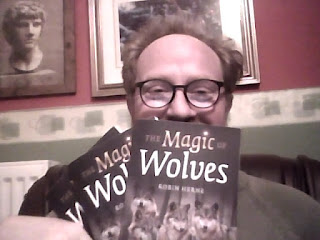The Phoenix and the Carpet - final
My reading of the twelfth and final chapter of Edith Nesbitt's (1904) children's book "The Phoenix and the Carpet". The poor old carpet really is worn out and, after a scare in which the nature of language is questioned, the magical bird makes a decision about its future. The power of magic is a huge responsibility, far too huge for children to bear (or, indeed, most adults) - such that a little of it goes a long way! The carpet itself responds to requests in a way very much in keeping with ancient understandings of magic that saw it as a vast and impersonal power that ought to be handled with kid gloves, before the New Age approach we have now that insists everything is about the intentions of the person rather than being anything external to their own massive ego. Without wanting to get sidetracked into 21st century obsessions with gender, I wonder if the phoenix is female or possibly some kind of hermaphrodite that reproduces without necessity for activities rega...
